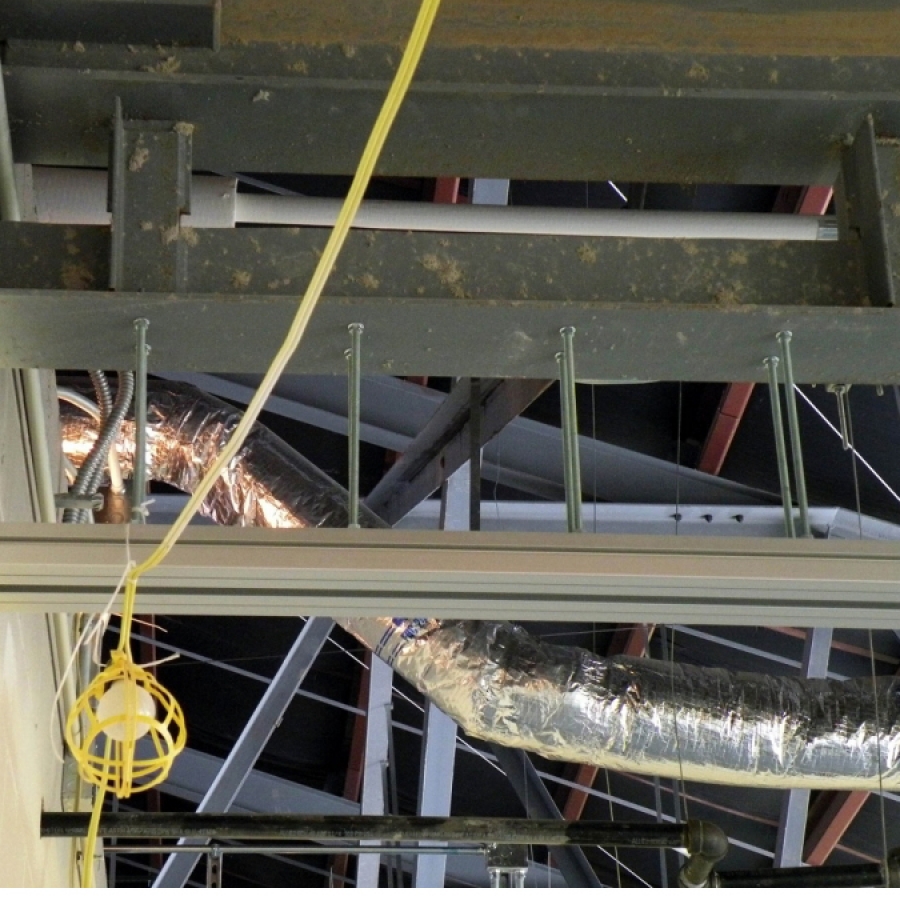Duct Insulation
Properly insulating air ducts located in unconditioned spaces such as attics, crawl spaces, garages, or unfinished basements can help improve your home's energy efficiency.

Topic Summary

Air ducts supply conditioned air from your space heating and cooling equipment to your living spaces. They also return an equal volume of air back to the equipment to be conditioned again.
Ducts are typically made out of thin metal materials that easily conduct heat. Therefore, uninsulated or poorly insulated ducts in unconditioned spaces can lose through conduction 10%–30% of the energy used to heat and cool your home. The heating and cooling equipment then has to compensate for the heat loss and gain by conditioning additional air. This added conditioning raises a homeowner's energy bills. In addition, when ducts lose heat through conduction, rooms served by long duct runs can experience "cold blow" during the winter because they usually have lower heating-supply temperatures.
Ducts in conditioned spaces experience minimal conductive losses and gains since they are exposed to indoor air temperatures. However, these ducts may also require some insulation to prevent condensation on duct walls and to ensure that conditioned air is delivered at the desired temperature.
HVAC contractors typically insulate ducts using rigid fiber board insulation. Below is a table showing the recommended R-values by climate for duct insulation in unconditioned spaces.
Table 1. Cost-Effective Duct Insulation R-Valuesa |
|||
| Climate | Type of Heating Systemsb | R-values for Unconditioned Attic | R-values for Unconditioned Basement/Crawlspace |
| Warm - cooling and minimal heating requirements (i.e., FL, HI, coastal/inland CA, southeast TX, southern LA, AR, MS, AL, GA) |
Gas/oil, electric resistance, or heat pump | R-4 to R-8 | none to R-4 |
| Mixed - moderate heating and cooling requirements (i.e., VA, WV, KY, MO, NE, OK, OR, WA, ID; southern IN, KS, NM, AZ; northern LA, AR, MS, AL, GA; inland CA; western NV) |
Gas/oil, electric resistance, or heat pump | R-4 to R-8 | R-2 to R-8 |
| Cold - (i.e., PA; NY; New England; northern Midwest; Great Lakes area; mountainous areas: CO, WY, UT, etc.) | Gas/oil, electric resistance, or heat pump | R-6 to R-11 | R-2 to R-11 |
a. Adapted from Modera et al., "Impacts of Residential Duct Insulation on HVAC Energy Use and Life Cycle Cost to Consumers," ASHRAE Transactions (#AT-96-13-4)
b. Insulation is also effective at reducing cooling bills. These levels assume that you have electric air conditioning.
Article source: The U.S. Department of Energy’s Office of Energy Efficiency and Renewable Energy (EERE). For the most up-to-date information please visit the EERE website.



